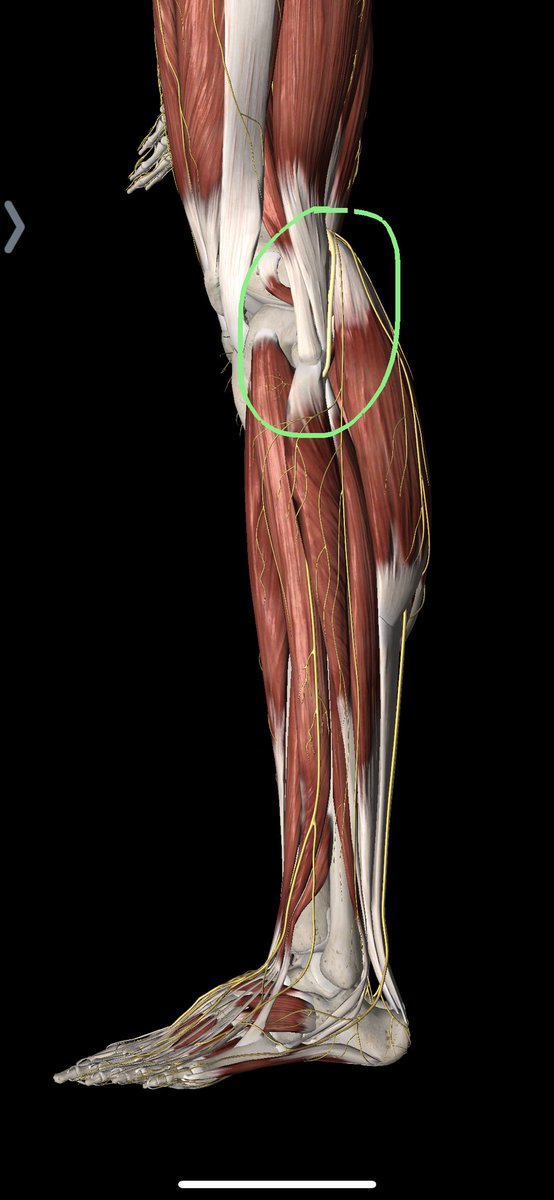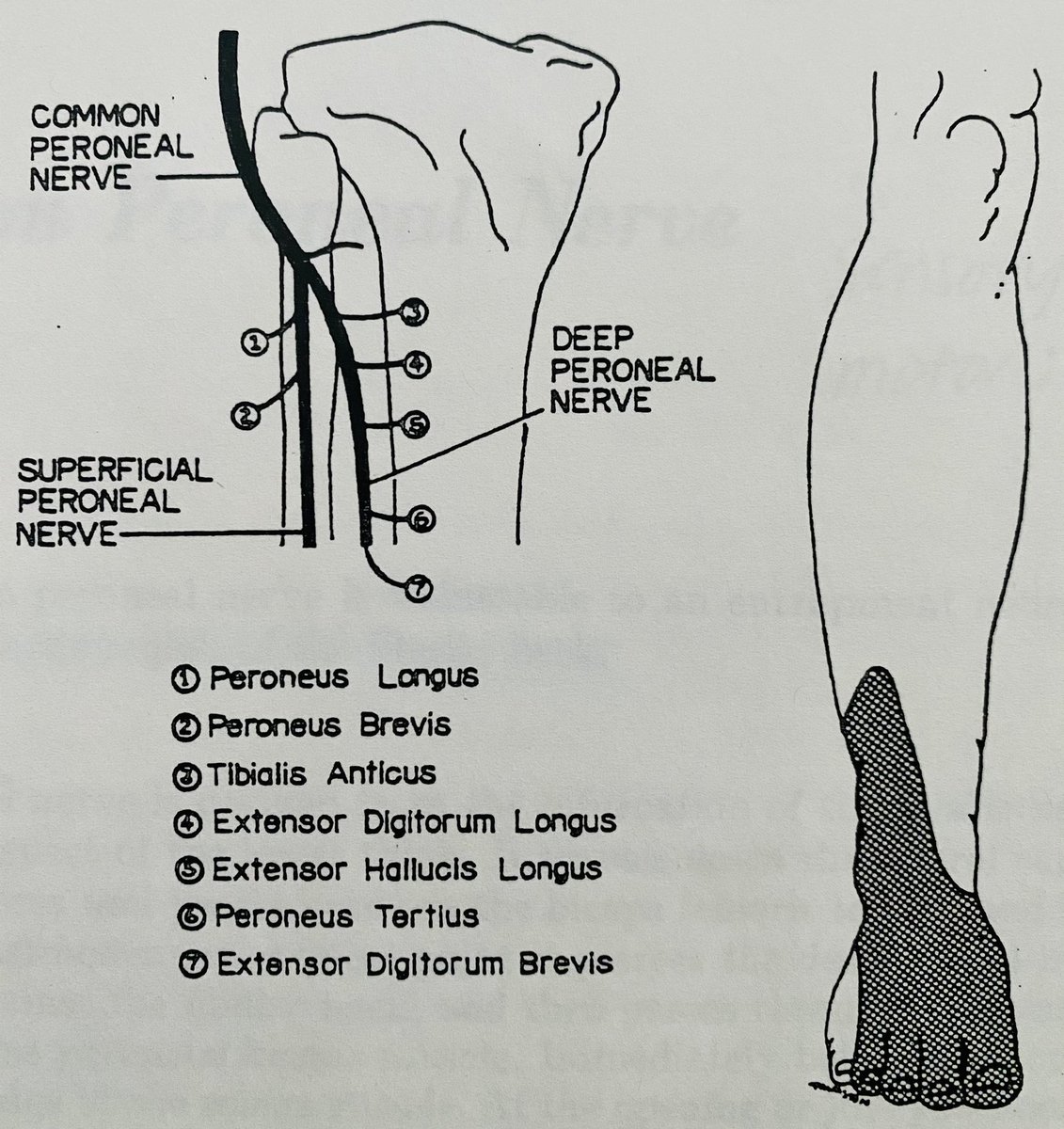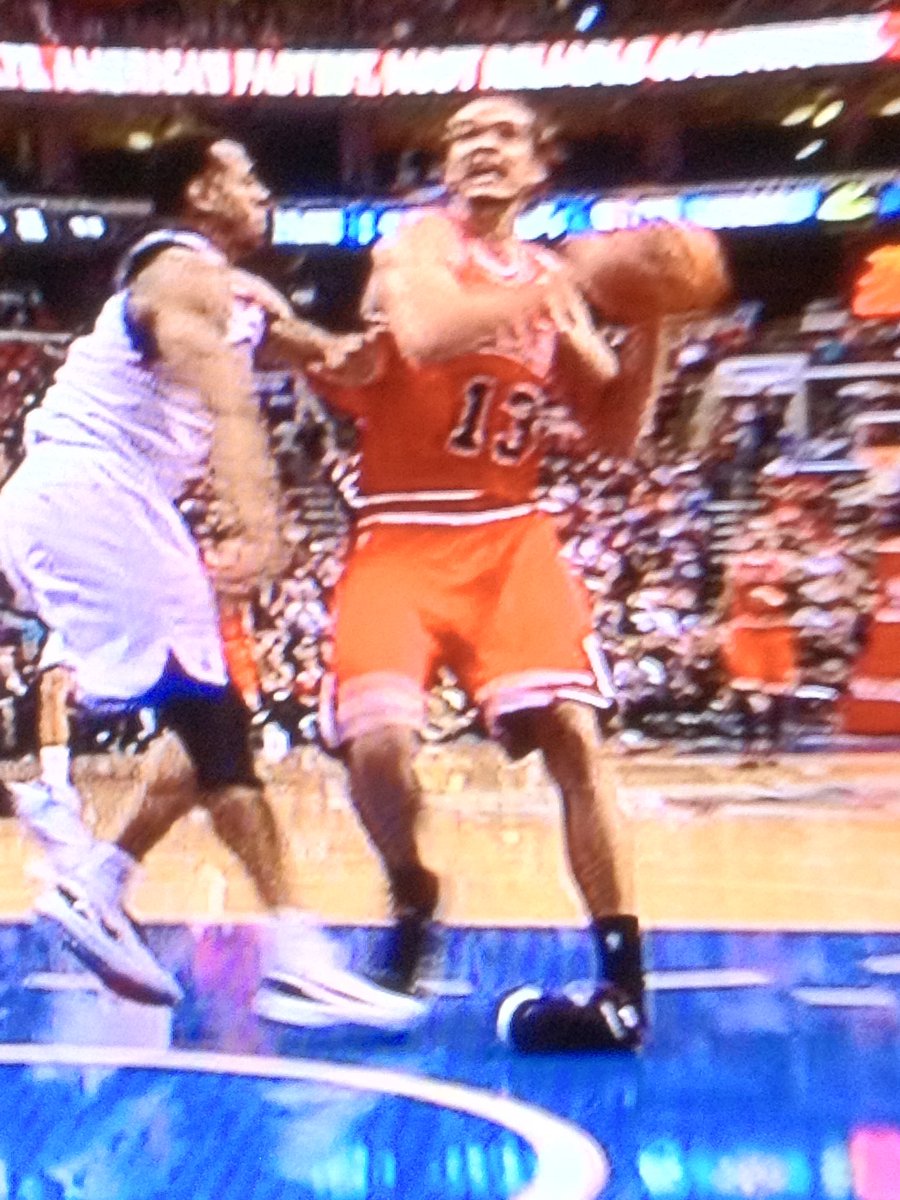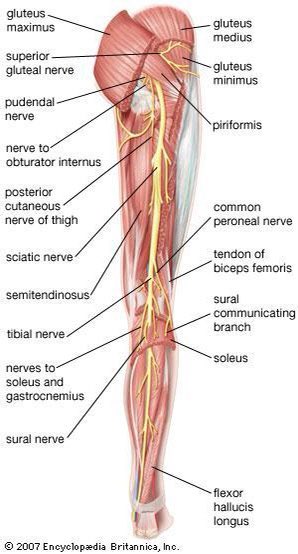1/ Here’s a thread on entrapment that nobody requested.
This time the victim is the Common Peroneal Nerve.
Its namesake comes from the names of adjacent muscles derived from the Greek word “Perone” meaning “pin of a brooch or buckle”... kinda like a modern safety pin.
This time the victim is the Common Peroneal Nerve.
Its namesake comes from the names of adjacent muscles derived from the Greek word “Perone” meaning “pin of a brooch or buckle”... kinda like a modern safety pin.
2/ You prolly already know this, but just in case....
The common peroneal nerve is an extension of the Sciatic nerve, and passes behind the head of the fibula through an opening in the origin of the peroneus longus muscle.
The common peroneal nerve is an extension of the Sciatic nerve, and passes behind the head of the fibula through an opening in the origin of the peroneus longus muscle.
3/ Somewhere along this passage (before/after) it splits into 3 branches:
• superficial
• deep
• recurrent
• superficial
• deep
• recurrent
4/ Common (root) Peroneal Nerve supplies:
• ankle dorsiflexors muscles
• foot/ankle eversion muscles
• sensation along lateral > anterior aspects of knee, ankle, & foot.
• ankle dorsiflexors muscles
• foot/ankle eversion muscles
• sensation along lateral > anterior aspects of knee, ankle, & foot.
5/ Neuropathy of the Peroneal nerve results in pain along the lateral surface of leg & foot.
If the neuropathy is significant enough, then (in addition to changes in sensation & ankle weakness) you’ll see atrophy of foot/ankle dorsiflexors and evertors.
If the neuropathy is significant enough, then (in addition to changes in sensation & ankle weakness) you’ll see atrophy of foot/ankle dorsiflexors and evertors.
6/ Here’s where it gets interesting:
What causes neuropathy of the common peroneal nerve?
• direct trauma: tight boot/brace/cast
• fracture of fibular head
• popliteal cyst
• scar tissue along the insertion of peroneal/soleus muscle
• INVERSION ANKLE SPRAIN!!!
What causes neuropathy of the common peroneal nerve?
• direct trauma: tight boot/brace/cast
• fracture of fibular head
• popliteal cyst
• scar tissue along the insertion of peroneal/soleus muscle
• INVERSION ANKLE SPRAIN!!!
7/ Let’s build on the last bullet point - inversion ankle sprains.
The combo of plantar flexion & inversion could create
1) neuro-traction injury at the common peroneal nerve behind the fibular head,
and/or
2) neuro-tension injury behind the lateral malleolis at the ankle
The combo of plantar flexion & inversion could create
1) neuro-traction injury at the common peroneal nerve behind the fibular head,
and/or
2) neuro-tension injury behind the lateral malleolis at the ankle
8/ Let’s focus on #1 - entrapment of common peroneal nerve at the region of fibular head.
The odds of this nerve injury getting masked by the usual MSK signs & symptoms associated with an ankle sprain are VERY HIGH.
In fact, it’s almost always missed!
The odds of this nerve injury getting masked by the usual MSK signs & symptoms associated with an ankle sprain are VERY HIGH.
In fact, it’s almost always missed!
9/ When left I untreated you’ll *sometimes* hear reports of pain along the lateral aspects of lower leg
And, here’s the kicker: reports of a “weak ankle.”
If they don’t have appropriate function of their ankle evertors then why wouldn’t they think they have a “weak ankle”?!?
And, here’s the kicker: reports of a “weak ankle.”
If they don’t have appropriate function of their ankle evertors then why wouldn’t they think they have a “weak ankle”?!?
10/ Here’s what you’ll likely find in the clinic:
• radiating pain along the nerve trunk (especially with specific palpation)
• weak ankle DF & foot eversion
• discomfort/pain with ankle PF + Inversion
• radiating pain along the nerve trunk (especially with specific palpation)
• weak ankle DF & foot eversion
• discomfort/pain with ankle PF + Inversion
11/ Things to watch out for during neurological differentiation:
• radicular sciatica
• sciatic trunk neuropathy
• distal peroneal neuropathy radiating proximally (it happens!)
• radicular sciatica
• sciatic trunk neuropathy
• distal peroneal neuropathy radiating proximally (it happens!)
12/ Sometimes “weak ankles” are weak because nobody unpacked an entrapment of the common peroneal nerve at the fibular head.
Now you know.
And, knowledge is power.
With power comes responsibility.
 https://abs.twimg.com/emoji/v2/... draggable="false" alt="🔥" title="Feuer" aria-label="Emoji: Feuer">
https://abs.twimg.com/emoji/v2/... draggable="false" alt="🔥" title="Feuer" aria-label="Emoji: Feuer">
p.s. make sure you rule out the usual ligament, muscle, & osseous injuries.
Now you know.
And, knowledge is power.
With power comes responsibility.
p.s. make sure you rule out the usual ligament, muscle, & osseous injuries.

 Read on Twitter
Read on Twitter






 p.s. make sure you rule out the usual ligament, muscle, & osseous injuries." title="12/ Sometimes “weak ankles” are weak because nobody unpacked an entrapment of the common peroneal nerve at the fibular head.Now you know.And, knowledge is power.With power comes responsibility.https://abs.twimg.com/emoji/v2/... draggable="false" alt="🔥" title="Feuer" aria-label="Emoji: Feuer">p.s. make sure you rule out the usual ligament, muscle, & osseous injuries." class="img-responsive" style="max-width:100%;"/>
p.s. make sure you rule out the usual ligament, muscle, & osseous injuries." title="12/ Sometimes “weak ankles” are weak because nobody unpacked an entrapment of the common peroneal nerve at the fibular head.Now you know.And, knowledge is power.With power comes responsibility.https://abs.twimg.com/emoji/v2/... draggable="false" alt="🔥" title="Feuer" aria-label="Emoji: Feuer">p.s. make sure you rule out the usual ligament, muscle, & osseous injuries." class="img-responsive" style="max-width:100%;"/>


